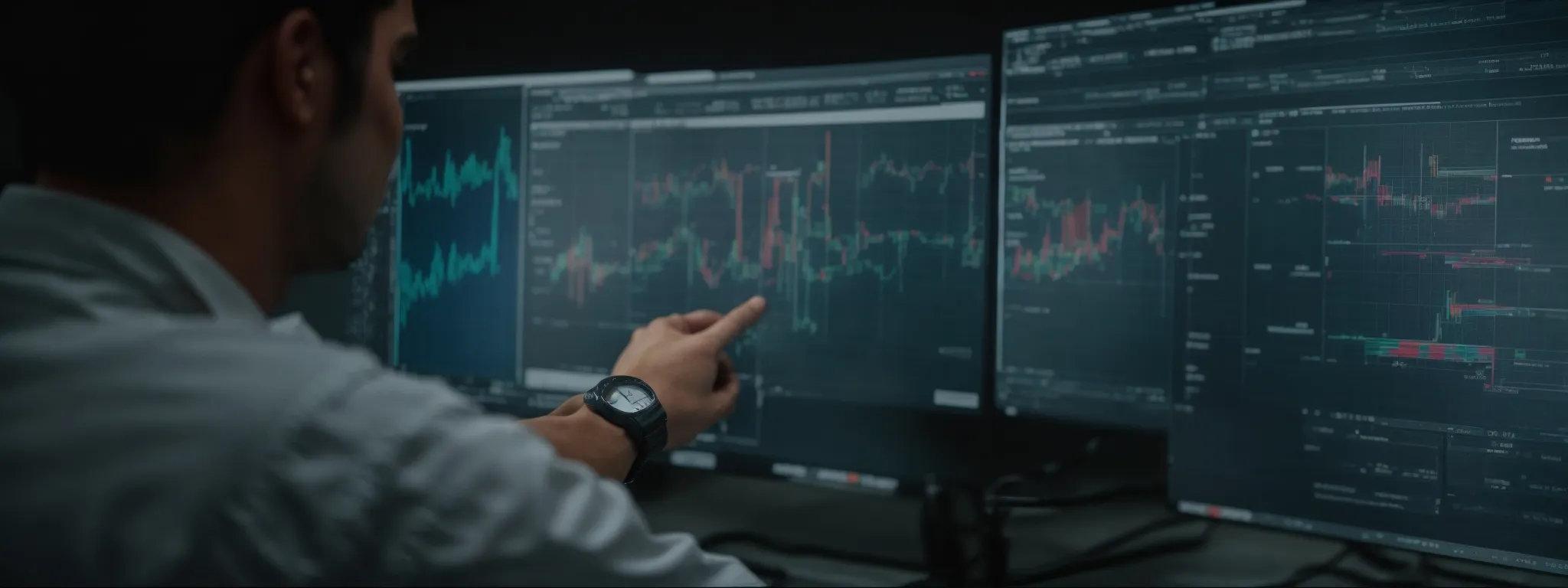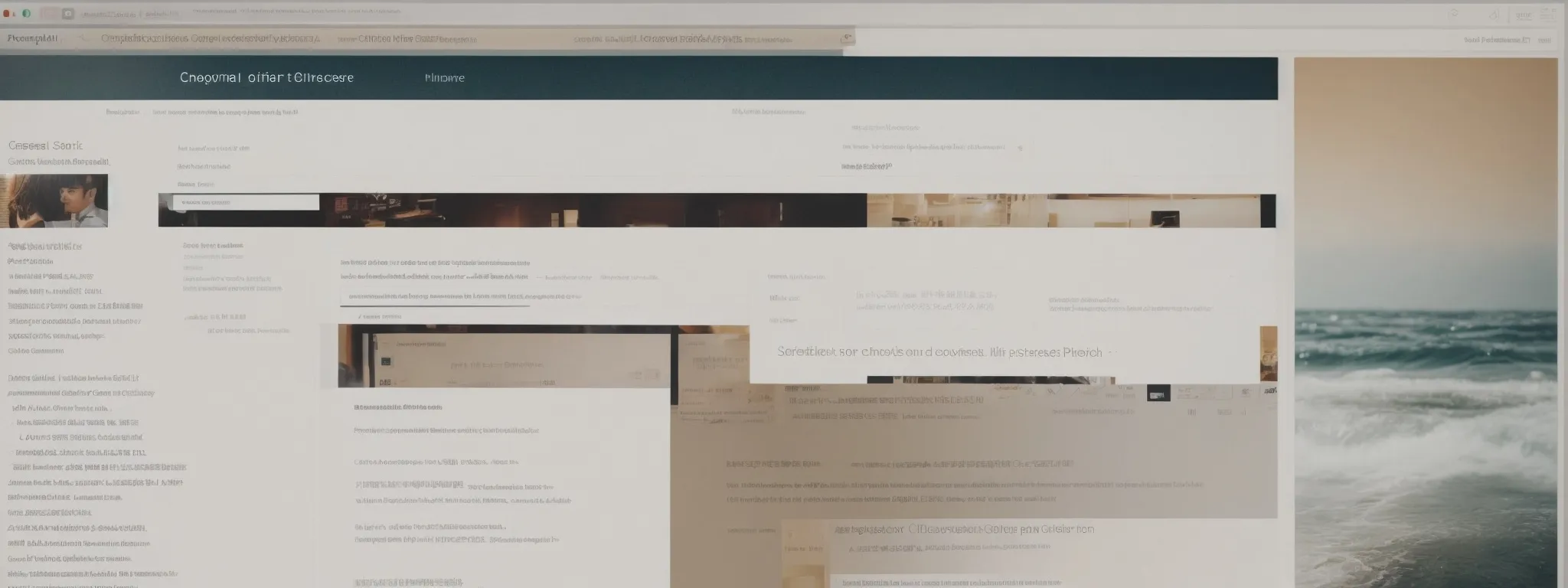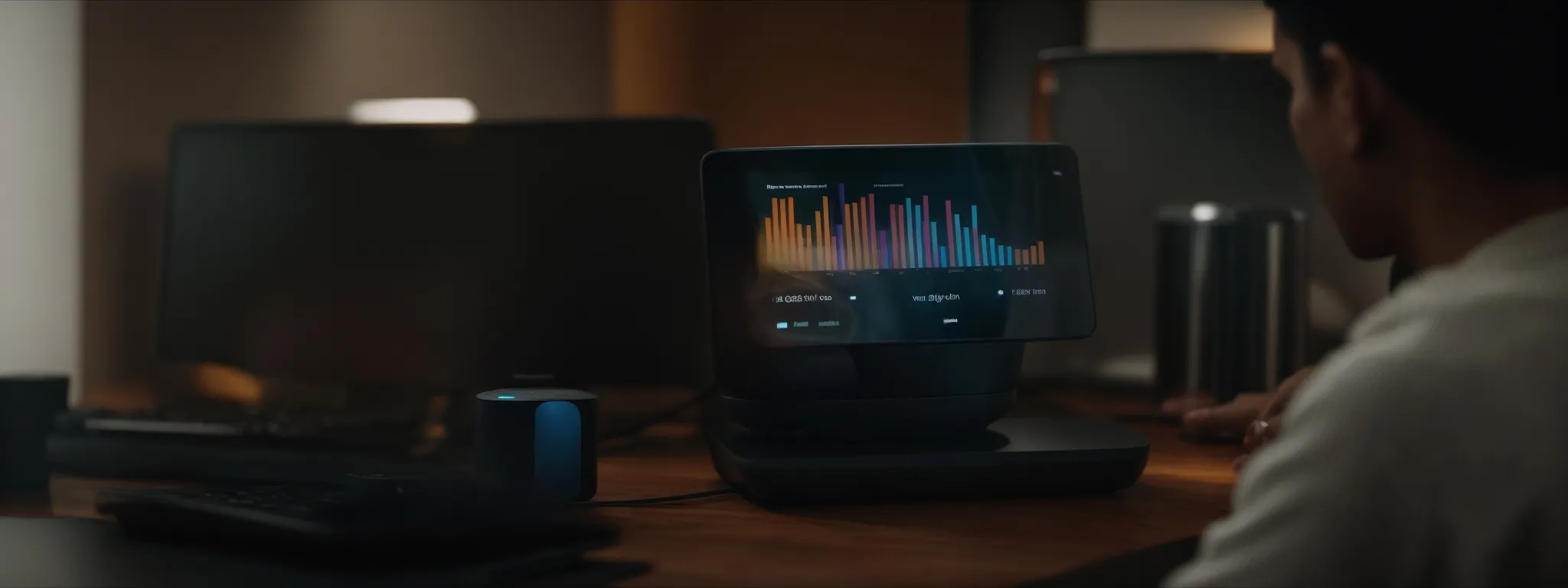Top SEO Trends 2021
Essential SEO Trends Dominating 2021 As the digital landscape continues to evolve at a breakneck pace, staying abreast of SEO trends has become integral for organizations aiming […]
Essential SEO Trends Dominating 2021
As the digital landscape continues to evolve at a breakneck pace, staying abreast of SEO trends has become integral for organizations aiming to maintain and enhance their online visibility.
With Core Web Vitals from Google reshaping the SEO playing field, and mobile-first indexing no longer being a mere option but a necessity, successfully navigating the complexities of SEO in 2021 is essential for any brand aiming to rise above the noise.
Voice search optimization and the application of artificial intelligence in SEO illustrate just how dynamically search engine optimization strategies must adapt to user behavior and technological advancements.
Indeed, understanding these emergent SEO trends is critical for crafting a resilient online presence that transcends transient shifts in algorithms.
Keep reading to discover how LinkGraph’s expert SEO services integrate these trends into robust strategies that elevate your brand’s digital footprint.
Key Takeaways
- Google’s Core Web Vitals Directly Influence SEO Rankings and Should Be a Focus Area for Optimization
- Schema Markups Are Essential for Enhancing Visibility in Search Results by Making Content More Understandable to Search Engines
- Mobile-First Indexing Has Become Critical, Requiring Content to Be Optimized for a Seamless Mobile User Experience
- Artificial Intelligence and Machine Learning Are Now Indispensable for Crafting Precise and Effective SEO Strategies
- EAT (Expertise, Authoritativeness, Trustworthiness) Plays a Crucial Role in Content Strategy for Improving Search Engine Rankings
Understanding the Impact of Core Web Vitals in 2021

In the digital milieu of 2021, website performance transcends mere aesthetics, with Google’s Core Web Vitals emerging as pivotal indicators for search rankings.
These metrics are critical for anyone vested in optimizing their online presence through Meticulous Search Engine Optimization (SEO).
Site owners and developers must prioritize three main performance metrics: Largest Contentful Paint (LCP), which gauges loading performance; First Input Delay (FID), which measures interactivity; and Cumulative Layout Shift (CLS), which evaluates visual stability.
Addressing each metric requires targeted strategies, where a granular approach can lead to tangible improvements in user experience, ensuring that visitors engage more deeply with the content and functionalities.
LinkGraph’s SEO services are adept at navigating these complex criteria, Providing Clients With the Technical Expertise to transform their sites into paragons of performance.
Starting With Largest Contentful Paint (LCP) Measurement
LinkGraph’s Comprehensive Analysis Begins With the Largest Contentful Paint, focusing keenly on the pivotal moment when the main content of a page becomes visually complete. This measure, essential to a user’s first impression, directly correlates with the satisfaction a visitor experiences and subsequentially with the search rankings a site can achieve.
Accelerating the LCP is a sophisticated art; it balances optimal content delivery network utilization with deft handling of on-page elements. Clients leveraging LinkGraph’s SEO services receive tailored solutions that meticulously compress image sizes, streamline server responses, and eliminate any render-blocking resources to enhance the visible content on their landing page in record time.
First Input Delay (FID) Optimization Steps
LinkGraph’s sophisticated approach to First Input Delay (FID) Optimization focuses on enhancing the interactivity of web pages. The team meticulously refactors JavaScript and streamlines event handlers to reduce the time from when a user first interacts with a site to the moment it responds, enhancing the perception of seamlessness and agility from the user’s perspective.
By optimizing for FID, LinkGraph ensures that the user’s experience is free from frustrating delays, thus fortifying site credibility and retaining user engagement. This optimization is part of a meticulous process where every millisecond counts, with the end goal being to ascend search rankings by meeting, and surpassing, Google’s Core Web Vitals requirements for a superior page experience.
Strategies for Cumulative Layout Shift (CLS) Improvement
LinkGraph elevates website stability through Innovative Strategies That Address Cumulative Layout Shift (CLS), a crucial factor for maintaining an intuitive and predictable user interface. Their tactics involve setting fixed dimensions for media files and ensuring ad elements have a reserved space before they load, which preserves the layout from unexpected changes that disrupt a user’s journey.
Adopting a systematic protocol for managing font and style changes during page load represents another pillar of LinkGraph’s methodology to minimize CLS. Engaging dynamic solutions like font display options and thorough testing on diverse devices, they champion a seamless visual experience that upholds the integrity of the content while enhancing user satisfaction:
| Core Web Vital | LinkGraph’s Optimization Strategy | SEO Benefit |
|---|---|---|
| LCP | Optimizing asset delivery and server response times. | Improved page load speeds for higher search rankings. |
| FID | Refactoring JavaScript and streamlining event handlers. | Enhanced interactivity leading to better user experience. |
| CLS | Implementing fixed media dimensions and reserved space for ads. | Stabilized page layout contributing to user retention. |
Leveraging Schema for Better Rich Snippets Visibility

As the complexity of SEO unwinds, Schema markup stands as one of the most effective tools in a digital marketer’s inventory, carving a path for rich snippets that amplify visibility in the search engine result pages.
In 2021, brands are placing a strategic emphasis on identifying the most relevant Schema markups to ensure their content is not only recognized but also favored by Google’s search algorithm.
Optimizing the implementation of structured data is essential; it elevates a website’s clarity for search engines, leading to enhanced visibility and potentially lifting the brand into the coveted position zero in search results.
Topics such as “Identifying Relevant Schema Markups for Your Content” and “Tips for Implementing Structured Data Effectively” become paramount in actualizing this aspect of SEO, which LinkGraph seamlessly integrates into their client’s SEO strategy.
Identifying Relevant Schema Markups for Your Content
Discerning the most applicable Schema markups for a brand’s digital content is akin to decoding a pathway to improved search visibility. LinkGraph’s SEO services assist clients in navigating the array of markups, meticulously selecting those that resonate with their brand voice and audience expectations.
With precise identification of relevant Schema types, from product information to author bios, organizations can enhance the specificity with which their content speaks to search engines and, by extension, to their target audience. The focused strategy amplifies a brand’s narrative within search engine result pages, paramount to commanding attention in the digital landscape:
| Content Type | Relevant Schema Markup | Search Visibility Impact |
|---|---|---|
| Product Pages | Product Schema | Enhanced display in SERPs, improved CTR |
| Author Articles | Person Schema | Authoritative presence in search results |
| Event Listings | Event Schema | Immediate recognition for time-sensitive content |
| Business Location | LocalBusiness Schema | Targeted visibility in local search queries |
Tips for Implementing Structured Data Effectively
Implementing structured data necessitates a strategic approach; an imperative step for entities is to ensure that their markup is both accurate and correctly formatted. LinkGraph’s expertise streamlines this process, deploying meticulous schema validation to prevent errors and ensure that structured data reinforces the clarity and relevance of the information presented on their client’s webpages.
Proper deployment of Schema is more than a technical requirement; it reinforces a narrative that resonates with both search algorithms and the queries of potential customers. Through LinkGraph’s SEO services, businesses capitalize on optimal structured data practices, positioning their content for prominent visibility, and offering users an informative snapshot even before they click through to the website.
JavaScript SEO: Enhancing Website Dynamism

In the swiftly evolving landscape of search engine optimization in 2021, JavaScript’s role in website structure has become a critical touchstone for technical SEO practices.
Brands and webmasters seek to leverage JavaScript to create interactive, dynamic user experiences while simultaneously ensuring that their sites remain fully accessible and indexable by search engines.
JavaScript optimization has surfaced as a vital component in SEO strategy, intricately linked with site performance in aligning with the latest technical SEO trends.
In such a context, masterful optimization of JavaScript is not just a recommendation; it’s an imperative for websites aiming to achieve prominence in search engine rankings.
How to Optimize JavaScript to Follow the Technical SEO Trends?
Optimizing JavaScript for Technical SEO Trends necessitates a delicate balance between functionality and crawlability. LinkGraph’s approach aims to minimize JavaScript’s impact on page load times while ensuring search engines can fully understand and index the website’s content, a critical factor for maintaining a robust online presence.
Properly optimized JavaScript calls for asynchronous loading where feasible, paired with server-side rendering or dynamic rendering techniques. Optimization efforts spearheaded by LinkGraph make certain that interactive features enhance, rather than impede, the website’s overall SEO performance and compatibility with evolving search algorithms.
Prioritizing Mobile-First Indexing for SEO

In 2021, the ascendancy of mobile-first indexing establishes a preeminent criterion for search engine optimization that brands can ill afford to ignore.
With the majority of global web traffic now mobilizing through handheld devices, Search Engine Optimization professionals are tasked with charting a new course—one that places mobile at the helm of SEO strategy.
This imperative shift necessitates a fundamental reevaluation of content design, compelling businesses to scrutinize and optimize for the mobile user experience extensively.
Additionally, it uncovers a slate of common mobile SEO challenges that must be addressed to ensure seamless navigation and maintain a competitive edge in the ever-evolving digital marketplace.
Designing Content With Mobile Users in Mind
Ensuring content thrives in a mobile-first landscape, LinkGraph incorporates a mobile-centric approach within their on-page SEO services. Their focused efforts convert the complexity of site navigation into streamlined experiences, essential for users interacting through a variety of touchscreen devices. By meticulously optimizing for touch-friendly interfaces and swift page load speeds, content is not just accessible but intuitively designed for the mobile user journey.
LinkGraph’s meticulous adherence to responsive design principles stands as a testament to their proficiency in catering to mobile users. Content structure receives scrupulous attention, keeping it compact yet comprehensive, thereby facilitating readability and engagement on even the smallest of screens. The content’s adaptability across diverse devices underscores their commitment to ensuring every user’s encounter with a client’s digital presence is both positive and impactful.
Addressing Common Pitfalls in Mobile SEO
In the journey towards mobile-first indexing, LinkGraph skillfully addresses the common fallacies that could compromise a mobile site’s SEO effectiveness. Acknowledging and circumventing issues such as unplayable content, intrusive interstitials, and slow mobile page load times are critical steps that LinkGraph’s team takes to ensure a smooth mobile user experience, solidifying a website’s favorable disposition in Google’s eyes.
Site speed remains a formidable consideration within mobile SEO; LinkGraph’s dedication to fast-loading pages substantiates their clients’ rankings as it profoundly impacts user engagement and session duration. By vigilantly refining technical elements, from image compression to the minification of code, LinkGraph ensures that swift and responsive mobile pages bolster the overall SEO strategy, mitigating the risk of mobile ranking penalties.
Voice Search Optimization: Staying Ahead in 2021

As businesses hurl into the digital future, voice search has surged to the forefront as a potent SEO trend that demands attention.
The proliferation of smart devices and the convenience of hands-free search have shifted user behavior, with a significant uptick in queries articulated through natural, conversational language.
Focused efforts on optimizing for voice search now prove to be a strategic imperative for companies aiming to secure a prime position in 2021’s dynamic search landscape.
LinkGraph’s SEO services craft tailored approaches that build and enhance discoverability in a voice-driven market, ensuring clients not only anticipate but effectively capitalize on this burgeoning mode of search.
How to Be Ready for Voice Search?
To edge ahead in the voice search arena, businesses must refine their SEO strategy to mirror the natural speech patterns of their target audience. LinkGraph’s SEO services expertly tailor a brand’s online content to resonate with the colloquial queries posed by users, thus amplifying the likelihood of capturing voice search traffic.
Embracing long-tail keywords and factoring the intent behind voice commands become critical components in optimizing for voice search. By incorporating question-based phrases and localized information, LinkGraph ensures that clients maintain relevance in the swiftly growing sphere of conversational search:
- Integration of conversational keywords aligned with user intent
- Inclusion of structured data to enhance contextual understanding for search engines
- Comprehensive local SEO strategies to capitalize on proximity-based voice queries
Moreover, the user experience is significantly elevated through the adaptation of content for brief, accurate answers favored in voice search results. LinkGraph’s proficiency in crafting succinct yet informative snippets positions clients to effectively address voice search inquiries, securing a competitive edge in the digital landscape.
The Rise of Artificial Intelligence in SEO

As the digital landscape evolves, artificial intelligence (AI) and machine learning carve out an influential niche in shaping search algorithms.
In 2021, these technologies are not just auxiliary tools but central features that redefine how search engines interpret user queries and determine rankings.
Brands attuned to these shifts recognize the importance of adapting SEO strategies, integrating AI innovations to remain at the forefront of a highly competitive market.
LinkGraph’s SEO services exemplify this adaptive approach, harnessing the sophisticated capabilities of AI to refine and evolve search engine optimization efforts for their clients.
AI and Machine Learning’s Role in Search Algorithms
Artificial intelligence and machine learning have become integral in refining the accuracy of search algorithms, ensuring they adapt with agility to the subtleties of human language and search patterns. Within the purview of 2021’s SEO trends, these advancements offer unprecedented precision in personalizing search results, catering to the unique intent and context behind each user query.
LinkGraph harnesses these technologies through the SearchAtlas SEO software, setting a new standard for data-driven SEO strategies. By analyzing vast data sets and detecting nuanced patterns, LinkGraph’s AI-powered tools enhance the granularity of keyword research and content optimization, paving the way for improved search rankings and user engagement.
Adapting SEO Strategies to AI Innovations
In the complex fabric of 2021’s SEO landscape, artificial intelligence is not merely a technological marvel; it has become a cornerstone for strategic search engine optimization. Acknowledging the sophistication AI brings, LinkGraph strategically integrates the advanced analytic capabilities of AI with human creativity to craft data-driven yet intuitively appealing SEO strategies.
LinkGraph’s commitment to adopting AI innovations manifests in the precision of their SEO tactics—from employing the SEO AI Writer for enriching content relevance to utilizing machine learning algorithms for predictive analysis of search trends. This confluence of technology and strategy ensures that their clients’ digital footprints resonate strongly with both the algorithms and the human users they aim to reach.
The Critical Nature of Image Optimization

In the realm of Search Engine Optimization for the year 2021, robust image optimization emerges as a quintessential practice that marketers and webmasters alike should not underestimate.
As visual content increasingly influences user engagement and search rankings, fine-tuning images for web-readiness plays a significant role in SEO strategies.
LinkGraph’s proficiency extends to this crucial aspect, ensuring images are both technically and contextually optimized.
This approach not only shrinks page load times but also enhances visibility, leveraging alternative text and captions to serve as an anchor for search engine crawlers and enhance user experience.
Focusing on image optimization is not a mere detail; it’s a vital component of a holistic SEO strategy that can markedly amplify a site’s online presence.
Best Practices for Image File Optimization
In the vanguard of SEO proficiency, LinkGraph underscores the importance of image file optimization, distilling it to a science. Proper image optimization ensures swift page load times, enhancing user experience and contributing positively to a website’s SEO standing.
One of the foundational steps involves the meticulous selection and compression of image files:
- Choosing the correct file format, like JPEG for photographs and PNG for graphics with transparent backgrounds, optimizes loading times and preserves image quality.
- Compression tools are deployed to reduce file size without sacrificing visual integrity, facilitating faster page rendering and reduced bandwidth consumption.
Furthermore, LinkGraph champions the integration of descriptive, keyword-rich file names and alt attributes, enabling search engines to index images with greater accuracy while providing context to visually impaired users.
Enhancing Image Visibility With Alt Text and Captions
In the arena of image optimization, alt text and captions assume pivotal roles, as they enhance images’ visibility, acting as conduits through which search engines discern content relevance and context. LinkGraph’s services embrace this tenet by ascribing meticulously crafted, descriptive alt text to images, enriching the website’s SEO potential by ensuring images contribute to the overarching keyword strategy.
Furthering search engine comprehension, captions provided by LinkGraph not only elucidate the images but also serve as an additional textual layer, encouraging greater engagement from users. This practice buttresses the images’ significance within the tapestry of content, amplifying user experience, and bolstering potential for higher rankings in the visual realm of search results.
Balancing User Experience (UX) With SEO Strategies

In the dynamic digital landscape of 2021, the fusion of user experience (UX) with search engine optimization (SEO) has taken center stage.
As brands strive to climb the search engine result pages, they are acknowledging that a user-centric website design is instrumental in driving organic traffic and fostering user retention.
Foremost in this year’s SEO trends is the thoughtful integration of UI/UX design principles with SEO, along with leveraging user behavior data as a compass to steer UX enhancements and SEO initiatives.
Such strategic alignment between how users experience a web page and how search engines rank it is proving indispensable for businesses aiming to thrive online.
Integrating UI/UX Design Principles With SEO
In 2021, The Confluence of UI/UX Design Principles with search engine optimization has proved revolutionary in defining SEO success. LinkGraph’s comprehensive SEO services demonstrate an acute awareness of this trend, ensuring that design elements such as navigation ease, intuitive layout, and visual hierarchy align perfectly with the keywords and meta tags that bolster search visibility.
The attention paid to harmonizing aesthetics with optimization tactics signifies a forward-thinking approach in SEO strategies. LinkGraph places a strong emphasis on user-centric design that not only appeals visually but also caters to the algorithmic preferences of search engines, fostering a digital environment where user satisfaction and SEO efficacy coexist seamlessly.
Using User Behavior Data to Inform UX and SEO
Embracing the insights gleaned from user behavior data, LinkGraph hones UX and SEO strategies to converge on a singular goal: to elevate the user’s journey on a website. This intersection of analytics and user interface design leverages the profound knowledge hidden within metrics such as click-through rates, dwell time, and navigation paths, empowering the creation of an intuitive and conducive environment for organic discovery and engagement.
Informed by the myriad nuances of user interaction, LinkGraph crafts UX elements that are not only aesthetic but functionally resonate with the user’s search intent. This data-driven approach ensures that from the moment a user lands on a page, every aspect, from the content layout to the call to action, is attuned to both the user’s needs and the search engine’s requirements, fostering an ecosystem wherein visitors become long-term users:
| User Behavior Metric | UX Enhancement | SEO Impact |
|---|---|---|
| Click-Through Rate (CTR) | Targeted meta descriptions and title tags | Increased organic visibility and relevance |
| Dwell Time | Engaging, value-rich content | Signals content relevance and quality |
| Navigation Paths | Intuitive menu design and site architecture | Lower bounce rates, higher user retention |
Data Analytics to Inform SEO Technological Trends

As the digital terrain continues its rapid evolution, accurately harnessing data analytics has become the cornerstone of effective SEO practices in 2021.
Staying abreast of cutting-edge SEO trends requires a mastery of analytics tools that provide deep insights into SEO performance and emerging patterns.
This focus on data not only identifies the successes and opportunities within an SEO campaign but also fuels the strategic decision-making process, ensuring each step is underpinned by solid, analytical data.
As stakeholders strive for supremacy in the search engine results pages (SERPs), it’s the data-driven decisions that are setting the pace for SEO success in today’s market.
Tools for Tracking SEO Performance and Trends
Garnering actionable insights into SEO analytics necessitates the employment of robust tracking tools, a facet where LinkGraph’s SEO services excel. The implementation of SearchAtlas SEO software assists in the monitoring and evaluation of vital SEO reporting metrics, providing transparency on the performance and health of a client’s digital assets in relation to current SEO trends.
LinkGraph’s dedication to leveraging top-tier analytics tools strengthens clients’ strategies by offering real-time data on organic traffic patterns and keyword rankings. With the ability to assess and adjust strategies swiftly, clients benefit from a dynamic, data-informed approach, ensuring their online endeavors are in sync with the continuously shifting landscape of search engine result pages.
Making Data-Driven Decisions for SEO Success
In the dynamic quest for SEO prominence, LinkGraph guides businesses through the intricate process of making data-driven decisions to ensure SEO success. Their methodical approach capitalizes on the rich tapestry of data analytics, employing strategic on-page optimization and meticulous keyword targeting to refine and propel their client’s search engine rankings.
LinkGraph’s expertise in parsing through complex datasets translates to actionable SEO strategies that resonate profoundly with consumer search behavior. By identifying performance trends and algorithmic shifts, their team provides tailored recommendations that substantiate their clients’ SEO success, reinforcing their digital footprint in the competitive realm of SERPs.
Establishing EAT (Expertise, Authoritativeness, and Trustworthiness)

In the crucible of digital marketing, as brands jockey for position at the top of search engine rankings, there is a growing acknowledgment of the weight that EAT—Expertise, Authoritativeness, and Trustworthiness—carries in 2021’s SEO trends.
In this landscape, cultivating an unassailable online presence emerges as imperative for businesses aiming to assert their domain authority and win the trust of both search engines and users.
Content strategies pivot on demonstrating not just relevance but also depth of knowledge and reliability, marking a brand’s commitment to quality and genuineness in an otherwise crowded digital ecosystem.
Building an Authoritative Online Presence
In the quest to cement an authoritative online presence, businesses are tapping into SEO strategies that foster credibility and trust with their audience. LinkGraph’s SEO services emphasize the creation of authoritative content that demonstrates a brand’s expertise, directly impacting its ability to rank higher on the search engine result pages.
Strategically crafted and informative content is conducive to building a reputation as an industry thought leader. Through their SearchAtlas SEO software, LinkGraph aids brands in consistently offering value-laden, expert content, enhancing their authoritativeness in the eyes of both consumers and search engines:
| SEO Element | LinkGraph Strategy for Authority | Impact on Online Presence |
|---|---|---|
| Quality Content Creation | Developing authoritative articles with in-depth research and insights. | Positions brand as an industry expert, improving trust and credibility. |
| Backlink Portfolio | Utilizing white-label link building services to secure quality backlinks. | Strengthens domain authority, signaling trustworthiness to search algorithms. |
| User Engagement | Optimizing on-page elements to enhance user interaction and retention. | Positive user experience metrics contribute to higher search engine rankings. |
Recognizing the importance of EAT in SEO, LinkGraph’s approach extends beyond content to include white-label link building, bolstering a brand’s authority by linking to reputable and relevant sites. This not only broadens the brand’s reach but also contributes to solidifying a trustworthy online image, essential for maintaining an authoritative stance in the competitive digital marketplace.
Content Strategies for Demonstrating Expertise and Trustworthiness
In the vortex of digital brand establishment, trustworthiness and expertise manifest as pivotal underpinnings, with profound implications on a brand’s search rankings. LinkGraph deftly orchestrates SEO content strategies that underscore expertise, employing scrupulous research and fact-checking protocols to ensure that every piece disseminated resonates with both accuracy and authority, thus fortifying a brand’s standing within Google’s algorithmic preferences.
Through careful crafting of an SEO content strategy that encapsulates a brand’s unique insight and thought leadership, LinkGraph heightens a brand’s authoritativeness in its respective niche. The organization’s precise focus on quality, relevance, and trust factors in content creation leads to enriched user engagement, driving home the EAT principles that Google and searchers value, and yielding a sustainable competitive edge in search engine result pages.
Conclusion
In 2021, the landscape of SEO is dominated by several key trends that are crucial for businesses aiming to succeed online.
Core Web Vitals have surfaced as significant ranking factors, necessitating a focus on metrics like LCP, FID, and CLS to offer superior user experiences.
LinkGraph has demonstrated expertise in optimizing these metrics through sophisticated strategies.
Schema markup has become critical for improving visibility through rich snippets in search results, and JavaScript optimization forms a core component of technical SEO to ensure site performance.
The shift to mobile-first indexing reflects the substantial amount of traffic from mobile devices, while voice search optimization caters to the rise in conversational queries.
The role of AI in SEO has grown, with machine learning influencing search algorithms and necessitating that strategies adapt to this advancement.
Image optimization also plays a significant role in enhancing user experience and search ranking, proving pivotal in a visually-oriented digital space.
Furthermore, the intertwining of UX with SEO highlights the need for websites that are not only optimized for search engines but designed with the user in mind, utilizing data analytics to inform and guide SEO decisions.
Lastly, establishing EAT is fundamental, as it contributes greatly to a website’s credibility, influencing both Google’s algorithmic preferences and user trust.
LinkGraph has adeptly navigated these trends, integrating them into comprehensive strategies that underscore the critical nature of staying abreast with the latest SEO advancements to achieve online prominence.














































































